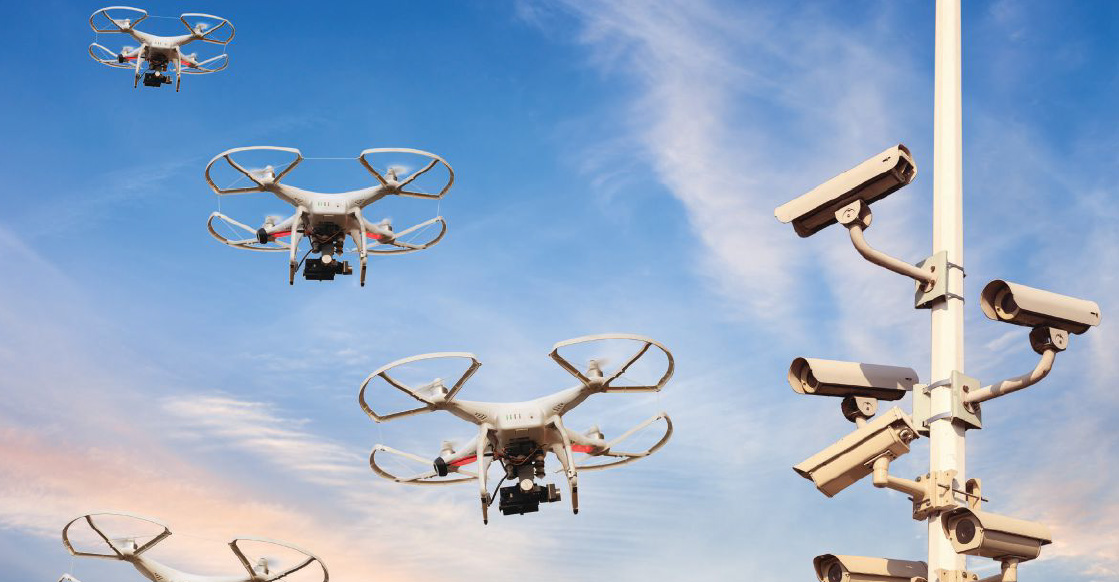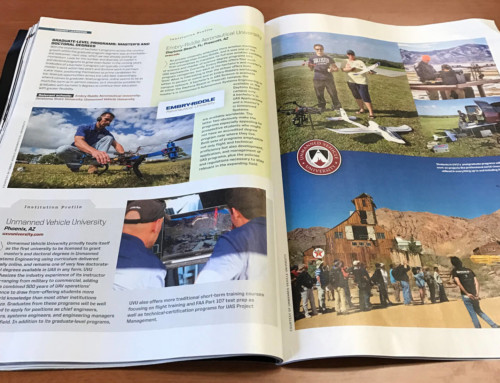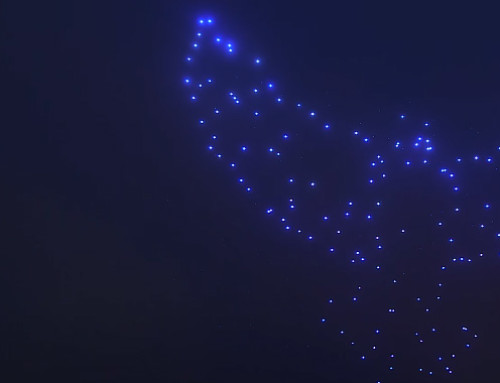Campus Safety Magazine published John Minor’s (Provost for Unmanned Vehicle University) by-line in their Jan/Feb issue. The comprehensive story spans four pages, and is called out on the front cover.

In the commercial context, the drone that is poised to revolutionize the security industry is not your “grandpa’s drone,” which was primarily an aerial target used by the military. Commercial drones incorporate a sophisticated network of systems, which consist of the aircraft, sensors, two-way communications and ground control stations. Let’s take a closer look at how and why this buzz-worthy technology is making so much noise in the campus security community.
ADDITIONAL CAPABILITIES EXTEND WATCH
Ground cameras — no matter how hightech — are still limited by their design. If an intruder steps out of a camera’s field of vision, the camera essentially becomes useless. The same happens if a criminal sprays the camera dome with paint or puts a hood over it. This won’t be the case with airborne cameras (drones) that operate out-of-reach of criminals. Without a doubt, drones will become a major part of future security and surveillance systems.
Drones offer a fast-launching, easy-to-operate, portable and cheap replacement to manned aircraft as the “eye in the sky” for most campus security applications. They provide added capability that stationary cameras cannot provide. In fact, given the vast need for security on and around campuses, as well as in other markets, such applications will likely be among the top five uses for drones overall within the next five years.
Consider the security needs of universities and schools. The advantages for campus police and security departments using surveillance drones are clear: Drones can easily monitor wide swaths of hard-to-reach and high-risk locations, such as trails and parking lots, while also providing all first responders with real-time situational awareness during campus emergencies. Unlike fixed video surveillance systems, drones can be deployed at a moment’s notice to any location with no installation costs.
SENSORS AND VIDEO PROVIDE A POWERFUL TANDEM
Drone technology offers a much more comprehensive security surveillance system. A drone’s sensors are one of the most important (if not the most important part) of the system. Drone sensors provide the actual imagery that will be used for the chosen application; therefore choice of resolution is extremely important when choosing a sensor. The sensors can be traditional cameras or video systems, thermal infrared imaging systems, light detection and ranging systems (LIDAR), or a variety of other sensors designed for specific applications. For example, a drone carrying a thermal infrared sensor can easily spot a perimeter intruder at night by the heat they emit. Te two-way communications are used to get the sensor video and other information to the ground control station and for command and control of the aircraft and sensor. But it is really all about the benefits that an airborne sensor streaming real-time video with a Drone Video System (DVS) can offer to campus public safety departments.
The sensors carried by the drones provide new ways of conducting business in a more efficient and cost-effective manner. In fact, in any industry where cameras were previously carried by helicopters or manned aircraft, drones with cameras can do the same job more effectively and cheaper. Collecting irrigation and pesticide data with remote control drones can save farmers significant time and money, for instance. In fact, the Japanese farm industry has been using drones in this capacity for well over a decade. Law enforcement and first responders are now using drones to monitor dangerous situations in real-time. Fire battalion commanders are using drones to view entire firefighting scenes in order to direct and monitor the safety of their crew and evaluate the effectiveness of their operations from an aerial view.




